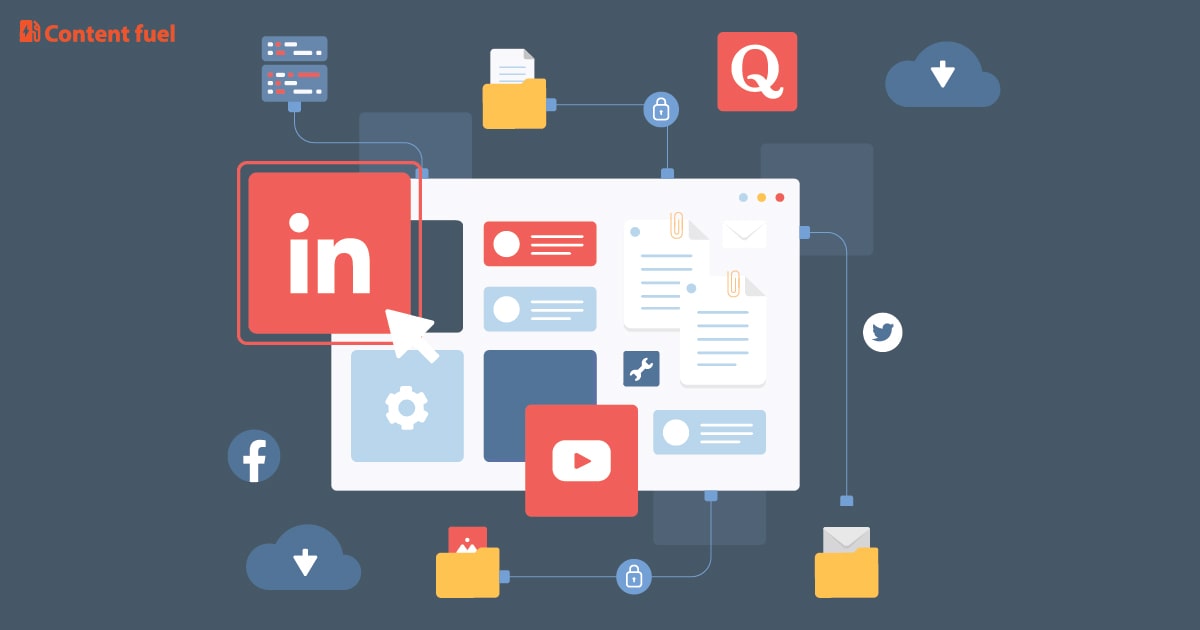Content distribution channels might sound like marketing jargon, but they’re game-changers. They’re all about the different ways you can get your content out there. It’s not just about posting on your blog and crossing fingers. Think of these channels as your megaphones, amplifying your message and ensuring it reaches your audience.
First up, you’ve got to know what content distribution channels are. Basically, any platform or method you use to share your content is a distribution channel. These channels fall into three main categories: owned, earned, and paid.
Owned channels are the ones you control completely, like your website, blog, and email list. These give you the most control over how your content looks and when it goes live. They’re usually the foundation of a solid content distribution strategy because, well, you’re the boss here.
Earned channels are where others share your content for you. This includes media coverage, shares on social media by others, guest posts, or features in someone else’s newsletter. Earned channels are powerful because they’re like endorsements – people trust content shared by someone they follow or respect.
Paid channels, as the name suggests, involve some cash. This includes social media ads, PPC (pay-per-click) campaigns, sponsored posts, and paid influencer partnerships. Paid channels can boost your reach quickly, especially if you’re just starting or trying to expand your audience fast.
So why is effective content distribution such a big deal for freelance marketers? Simple. A good piece of content doesn’t do much if no one sees it. Effective distribution gets your content in front of the right eyes, builds your brand, and drives traffic, leads, or sales. It’s like having a great billboard – on a deserted country road, it’s useless, but in the middle of Times Square, it’s golden.
Choosing the right channels starts with knowing your audience inside out. Where do they hang out online? Are they scrolling Instagram, networking on LinkedIn, or reading email newsletters? Your audience’s preferences should guide your distribution strategy. This is where audience analysis comes in. Spend time researching where your ideal clients are most active and tailor your content distribution accordingly. That way, you’re not just shouting into the void; you’re having a conversation with the people who matter.
Top Content Distribution Channels for Freelance Marketers
 Social media platforms are a goldmine for content distribution. Each platform has its unique vibe and audience. Facebook is great for building communities and sharing diverse content types. LinkedIn is the go-to for professional connections and industry insights. Twitter is all about real-time engagement and quick updates, while Instagram focuses on visual storytelling. Finding the right platform depends on where your audience spends their time and how they prefer to consume content.
Social media platforms are a goldmine for content distribution. Each platform has its unique vibe and audience. Facebook is great for building communities and sharing diverse content types. LinkedIn is the go-to for professional connections and industry insights. Twitter is all about real-time engagement and quick updates, while Instagram focuses on visual storytelling. Finding the right platform depends on where your audience spends their time and how they prefer to consume content.
Email marketing remains one of the most effective channels. Building and nurturing an email list allows you to communicate directly with your audience without the unpredictability of social media algorithms. Personalized emails can build a deeper connection with your subscribers, making them more likely to engage with your content and services.
Content syndication and guest blogging are excellent for extending your reach. By partnering with established blogs or websites in your niche, you can tap into their audience. This not only drives traffic to your content but also enhances your credibility and authority in your field. Plus, it’s a great way to build relationships with other content creators and influencers.
Podcasts and webinars have become increasingly popular. They offer a personal touch and allow for in-depth discussions on topics that matter to your audience. Hosting or guest appearing on a podcast or webinar can position you as an expert in your field and provide valuable content that your audience can tune into on the go.
Online communities and forums, such as Reddit, Quora, and industry-specific groups, provide a platform for direct interaction with your audience. Engaging in these spaces helps you understand your audience’s needs and pain points while positioning yourself as a helpful resource.
Video platforms like YouTube and TikTok are powerful for visual content. YouTube is ideal for longer, in-depth videos and tutorials, while TikTok’s short-form content is perfect for quick tips and engaging, bite-sized videos. These platforms can significantly expand your reach and connect you with a wider audience.
Optimizing Your Content Distribution Strategy for Success

Measuring the effectiveness of your distribution channels is key to understanding what works and what doesn’t. Analytics tools can help you track metrics such as engagement, reach, conversions, and more. This data provides valuable insights into how your content is performing across different channels.
A/B testing allows you to experiment with different versions of your content to see what resonates best with your audience. It can be as simple as testing two different subject lines for an email campaign or comparing the performance of two social media ad creatives. The findings from these tests can guide your future content strategies.
Balancing and integrating multiple channels ensures a cohesive strategy. Each channel has its strengths, and combining them can amplify your reach and impact. For example, promoting a blog post across social media platforms, your email newsletter, and a guest blog can maximize its visibility and engagement.
Leveraging tools and software can make distribution more efficient and manageable. Tools like Hootsuite for social media scheduling, Mailchimp for email campaigns, and Google Analytics for tracking performance help streamline your distribution efforts. By automating repetitive tasks, you can focus more on creating high-quality content.
Sustaining engagement and interaction with your audience is crucial for long-term success. Regularly posting content, responding to comments, and participating in discussions keeps your audience engaged and shows that you value their input. Creating a content calendar can help you stay organized and consistent.
Adapting to trends and evolving based on feedback keeps your strategy relevant. The digital landscape changes rapidly, and staying updated with the latest trends ensures your content distribution remains effective. Pay attention to feedback from your audience and be willing to tweak your approach to better meet their needs.

I enjoyed reading your clear, concise summary of the three main categories. You have clarified an easy-to-follow guide when broken down into how they work, and what may be best for the creator of many articles. I have tried using owned and paid methods, but your suggestion about earned channels opened my eyes. I had considered this, but my website was in its infancy. Now that it has become established with most blogs indexed by Google, it could be time for a rethink. Thanks for the timely reminder!
Hi there, great article that explains the vast and varied world of social media platforms and how they can be utilised to get your content recognised and create engagement, which is vital to getting site rankings. You’d be surprised how many groups there are on FB that are relevant to any niche and they are also great for establishing local communities. It’s staying on top in the online world that is ever changing and at lightning speed that is the tricky thing to master. Thanks for your insights.
Lyn
My mentor, a six-figure-a-year Internet marketer, taught me over twenty-five years ago that you spend five percent of your time creating content, and that includes repurposing content as well. The other ninety-five percent of your time should be spent on content distribution. Not that it was called that back in the day, but hey, the principle has not changed. The idea was to find out where your audience hangs out.
To be fair, I think you should know that before you create content, but that is just my thoughts. The more you know your audience and their pain points the more you can help them. I have to say I am old school I learned marketing while Mark Z was still in college so my favorite tool for content distribution is email, and sadly it is often overlooked in today’s world. I also love content syndication as it is so easy.
Thank you for your well researched article your content is spot on
It’s always a challenge figuring out where to focus your energy, especially with so many options out there. I remember when I first started freelancing, I spent ages trying to crack the code for getting my content seen. I finally hit the jackpot by combining Linkedin posts with targeted email newsletters, which really boosted my visibility.
Great article on content distribution channels for freelance marketers! I appreciate the comprehensive breakdown of various strategies. Social media platforms and email marketing are indeed powerful tools for reaching a broad audience and engaging directly with them. Guest blogging and content syndication seem like excellent opportunities for expanding reach and building authority – I would love to learn more about how you would recommend reaching out to other bloggers or website owners? I can definitely see the value and feel that I need to step out of my comfort zone in order to take my business to the next level. I can also see how podcasts, webinars and things like YouTube and TikTok could lead to a more personal connection with the audience.
I appreciate the overview and information on setting a strong foundation for freelance marketers looking to optimize their content distribution efforts. Thanks for sharing!
hi, this article offers an insightful guide that demystifies the complex world of content distribution. This is crucial for newcomers like me, aiming to build a strong online presence and effectively reach our target audience. One key takeaway is the emphasis on understanding and leveraging different channels. This article also highlights the importance of not relying solely on one platform.